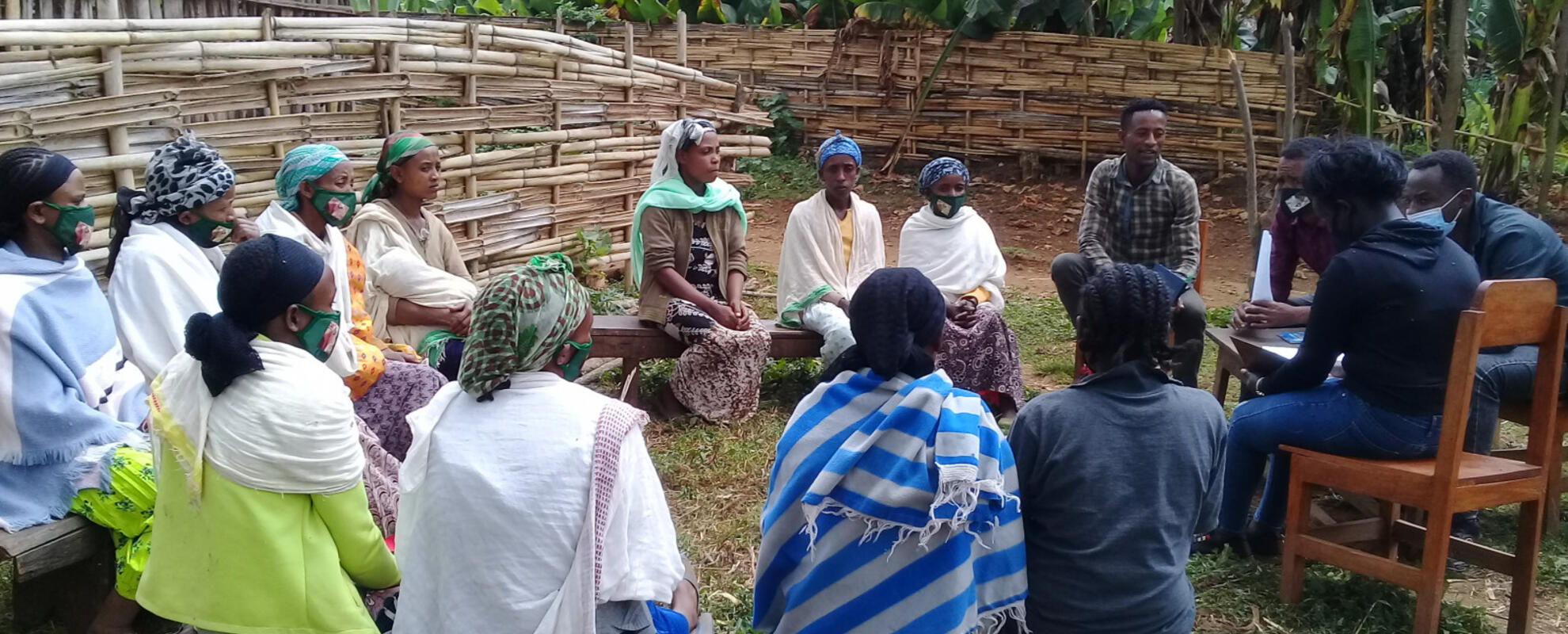
Strengthening engagement capacity of partners through community conversations and communities of practice in Menz Mama, Ethiopia
The International Livestock Research Institute (ILRI) works in close collaboration with national research and development partners. The CGIAR Research Program on Livestock (Livestock CRP) in Ethiopia used collaborative engagement approaches to strengthen partners’ capacity to uptake technical and institutional innovations, in particular through its work with regional research centers and district development partners.
Community conversations and communities of practice were used as integrated implementation platforms across CRP Livestock flagship projects and implementing partners. A community conversation is an inclusive engagement approach that facilitates joint analysis, learning, and action among researchers, community members and development partners, in this case, in herd health management. The community conversation modules integrated different herd health, welfare, productivity and gender issues to facilitate holistic awareness, knowledge and action both at the community and partners’ level.
Sharing her experience with community conversations, Jane Wamatu, feed and nutrition scientist at the International Center for Agricultural Research in the Dry Areas (ICARDA), said that ‘during a workshop organized for sheep fattening youth groups, l got a sneak peek into the potential of community conversations. The workshop was intended for communicating improved practices in feeds, nutrition and ration formulation. But it ended up being an in-depth discussion around feeding challenges of the youth group members. It was totally exhilarating. The in-depth information on feeding practices and feed resource utilization that was revealed can never be captured in surveys. Revelations on misconceptions and service delivery challenges all came to the fore. I have the conviction that community conversations are a very useful way for exploring diverse perspectives and gaining deep insights into livestock development challenges.’
Community voices and actions from these conversations enabled partners to develop informed interventions based on the local context. For example, Muluken Zeleke, animal feeds and nutrition researcher at Bonga Agricultural Research Center, planned to conduct participatory action research on improvement of locally available feed resources with farmers.
However, follow-up on the community conversations required complementary actions. The partners were brought together as a community of practice to strengthen collaboration, peer learning and joint action. This platform provided a coordination mechanism among the partners for the implementation and monitoring of community actions from the community conversations.
In conclusion, the Livestock CRP in Ethiopia used community conversations and communities of practice as complementary practice methods to facilitate implementation of integrated packages and strengthen inclusive engagement capacity of partners. These institutional innovations improved herd health service delivery by strengthening the demand and response capacity of the service system.





